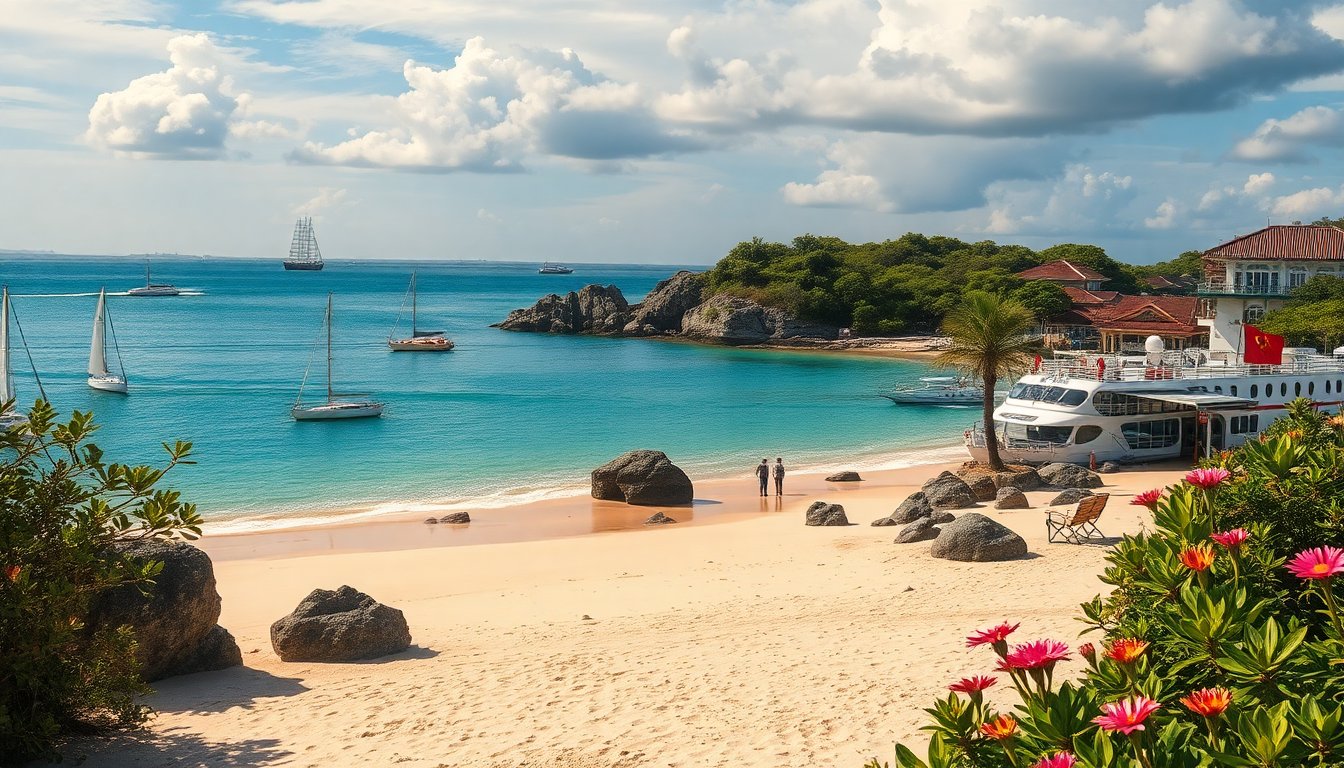Table of Contents
The Kinmen Islands, located just off the coast of mainland China, play a crucial role in Taiwan’s ongoing quest for autonomy. Despite their strategic significance, life on these islands reflects a surprising tranquility, shaped by a complex relationship with their powerful neighbor. Tourists, primarily from mainland China, frequently arrive in Kinmen by ferry from the nearby city of Xiamen, showcasing a blend of history and modern interactions.
Historically, Kinmen has faced several conflicts since the Chinese civil war in 1949, leaving its landscape marked by remnants of military engagements. Positioned over 300 kilometers west of Taipei, these islands have transitioned from battlegrounds to sites of remembrance, where visitors can explore former military installations that recount tales of past hostilities. Jerry Wu, a local taxi driver and tour guide, emphasizes the importance of understanding the history behind these sites, likening them to the Normandy landings of World War II.
Geopolitical tensions and military readiness
As tensions escalate, the Chinese government continues to assert its claim over Kinmen and Taiwan, raising concerns about potential military action. The upcoming meeting between U.S. President Donald Trump and Chinese President Xi Jinping at the Asia-Pacific Economic Cooperation (APEC) Summit is expected to focus on Taiwan’s future. Intelligence reports suggest that Xi has instructed his military to prepare for a possible invasion by 2027, prompting alarm within Taiwan.
Historically, the United States has been a steadfast ally of Taiwan, providing crucial military support. However, Trump’s unpredictable foreign policy has left many Taiwanese apprehensive about their security. Reports indicate that Trump has altered arms transfer agreements, creating unease among the populace regarding their island’s status as a potential bargaining chip in trade negotiations with China.
Historical significance of Kinmen
The Kinmen Islands represent more than just a military outpost; they embody Taiwan’s resilience against the perceived threat from China. In 1949, Nationalist forces retreated to Kinmen, establishing a defensive buffer against advancing Communist troops. At one point, the islands housed around 100,000 troops. The Taiwan Strait Crisis of 1958 saw relentless shelling from mainland forces for 44 days, further cementing the islands’ place in military history.
Today, remnants of this tumultuous past are visible in the form of concrete bunkers and anti-tank stakes that emerge from sandy beaches at low tide. Despite this history, many locals, including Wu, express a sense of distance from military threats, reflecting on the more volatile times. He notes that some residents have built personal relationships with individuals from the mainland, fostering a sense of community despite ongoing political tensions.
Community perspectives and future outlook
In the local markets of Kinmen, residents like Lin Ming-li, a 71-year-old vendor, share a different narrative. She believes the fear of war is overstated, emphasizing that proximity often fosters understanding and kinship. She remarks, “Xiamen and Kinmen are like one big family,” highlighting the interconnectedness of the communities.
Kinmen’s reliance on the mainland for resources, including drinking water, complicates this relationship. China has proposed various initiatives to enhance connectivity, such as plans for a bridge and electrical lines. However, the reality of military expansion from China is concerning, with daily incursions by Chinese vessels and aircraft into Taiwan’s airspace and waters.
Preparing for the unknown
As Taiwan’s defense strategy evolves, the government is taking steps to bolster military readiness. Compulsory national service has been extended, and investments in advanced missile defense systems are underway. The population is encouraged to participate in training exercises, with many young individuals attending refresher courses to maintain their skills.
Despite these preparations, experts remain cautious about the likelihood of immediate conflict. Taiwan’s military analysts note that logistical challenges and internal dissent within the Chinese military present significant barriers to a successful invasion. Ronan Fu, a researcher at Academia Sinica, suggests that domestic issues within China may ultimately delay any aggressive military actions.
Historically, Kinmen has faced several conflicts since the Chinese civil war in 1949, leaving its landscape marked by remnants of military engagements. Positioned over 300 kilometers west of Taipei, these islands have transitioned from battlegrounds to sites of remembrance, where visitors can explore former military installations that recount tales of past hostilities. Jerry Wu, a local taxi driver and tour guide, emphasizes the importance of understanding the history behind these sites, likening them to the Normandy landings of World War II.0


